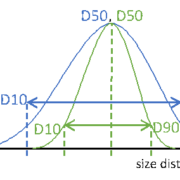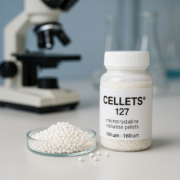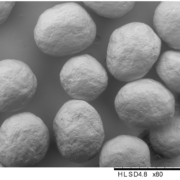What is a nutritional table for CELLETS® about? CELLETS® consist of 100% microcrystalline cellulose (MCC) and were developed for advanced oral dosage forms, such as MUPS, capsules, sachets, and stick pack units. Some pharmaceutical applications now overlap with food products and vice versa. The nutraceutical market is growing, and we frequently receive questions about the energy and nutritional content of MCC. Let’s clarify this.
MCC is a modified form of cellulose commonly used as a filler and stabilizer in the food and pharmaceutical industries. It consists of plant fibers and acts mainly as a dietary fiber. It contains almost no usable nutrients, such as vitamins, minerals, proteins, or fats. Since the human body cannot digest MCC, it provides no calories.
Because the body does not metabolize microcrystalline cellulose, it does not supply any macro- or micronutrients. Therefore, a nutritional table for 100 g of MCC would look like this:
| Substance | quantity per 100 g |
|---|---|
| Energy | 0 kcal |
| Protein | 0 g |
| Fat | 0 g |
| Carbohydrates | 0 g |
| Dietary fiber | 100 g |
| Sugar | 0 g |
| Salt | 0 g |
| Vitamins & minerals | 0 mg |
Microcrystalline cellulose is a pure dietary fiber with no nutritional value. The human digestive tract does not break it down or absorb it [1]. As a result, it provides no calories and no nutrients to the body. The same nutritional profile applies to CELLETS®, although it rarely matters in pharmaceutical formulations.
References
[1] N. Prabsangob, NFS Journal, 31 (2023) 39-49. doi:10.1016/j.nfs.2023.03.002




 adobe firefly
adobe firefly 

 adobe firefly
adobe firefly 
